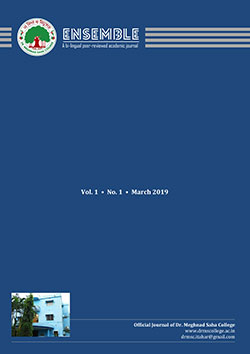The Examples of Vowels on Euphonic Combination in Kāśikāvṛtti and Vaiyākaraṇasiddhāntakaumudī: A Comparative Study
Abstract:
Pāṇini was the brightest star in the firmament of Sanskrit Grammar. He was a great Sanskrit grammarian flourished in between 4th century BC and 6th to 5th century BC. He was very well known for his notable work Aṣṭādhyāyī (formulation of 3,959 rules of Sanskrit morphology, syntax and semantics on the Sanskrit grammar). Aṣṭādhyāyī means eight chapters. He has given the entire initial framework of Sanskrit grammar within these. After that Katyayana composed vartikas on the Pāṇinian sutras. Patañjali also wrote the Mahābhāṣya, the great commentary on the Aṣṭādhyāyī and Vartikas.These are called Trimunivyākaraṇa. Out of so many components of Sanskrit grammar this paper deals with only Sandhi section. As we know that sandhi (Euphonic Combination) is the very nearest combination of two letters. Basically there are three main divisions of Euphonic combination. They are Svara-sandhi, Vyañjana-sandhi and Visarga-sandhi. The paper is limited to Euphonic Combination of vowels only. There are two lucid commentaries available on Pāṇini’s Aṣṭādhyāyī i.e., Kāśikāvṛtti in the middle of 7th century A.D. by Jayaditya and Vamana and Vaiyākaraṇasiddhāntakaumudī in the early 17th century by Bhattoji Diksita. Both the commentaries are fine in explanation. Both are providing number of examples while describing each sutra. This paper tries to focus on the examples of vowels on euphonic combination of both the commentaries with regards to their similarities and differences.
Keywords: Sanskrit grammar, commentary, root, preposition, sūtras, single substitute, euphonic combination
https://doi.org/10.37948/ensemble-2020-0201-a013
Views: 9164



